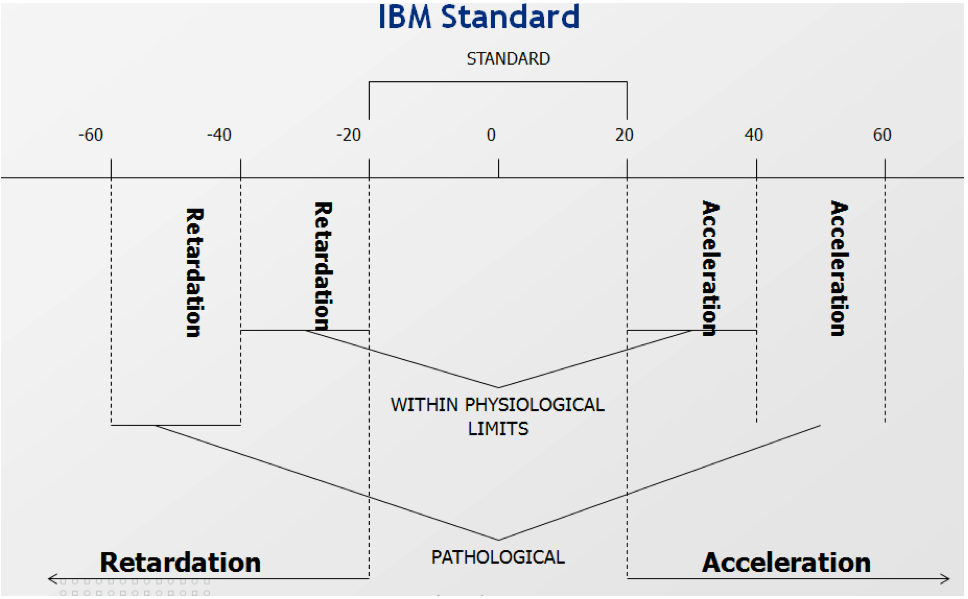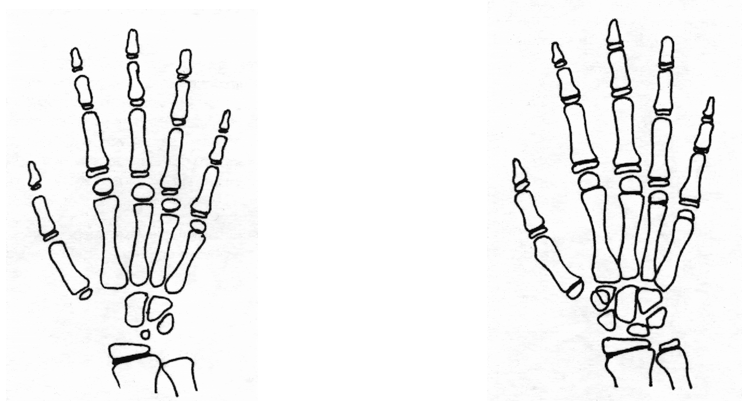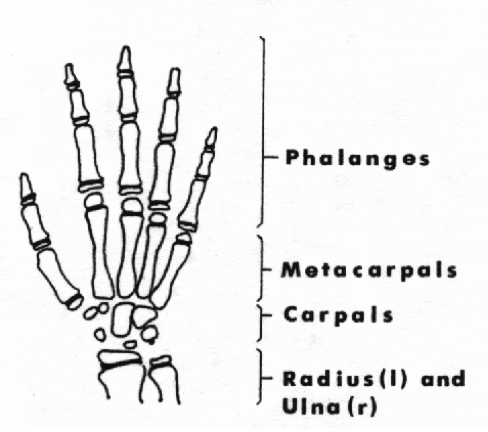
Why Do We Determine Biological Age?
To be able to evaluate efficiency, it is necessary first to judge if the individual matches developmental calendar age because the majority of standards is created on the basis of calendar age. If biological age notably differs from calendar age, an individual approach to the individuals in question is needed as well as individual judging of their efficiency following adjusted standards. Difference beyond calendar year can reach up to ± 3 years.
Growth Age:
At first, height age (a) and weight age (b) are determined on the basis of growth graph. To further calculate growth age, calendar age (c) is used together with three relations:
RV= (a + b +2c)/4
RV= (a+b+c)/3
RV= (a+b)/2
To set the extent to which biological age deviates from chronological age, it is possible to use index of biological maturity IBM which is figured out according to the following theorem: IBM = [ (RV.100)/CHV] -100
Fig. 21 IBZ standard (Riegrová, Ulbrichová, 1998, 102)

Proportional Age:
a) Complex feature of body constitution (Wutscherk, 1974): KC = KB/KA
KB = (shoulders width + bispinal pelvis width) × body height /2 × weight
KA = (length of upper limbs × circumference of relaxed arm) + (length of lower limbs × middle circumference of thigh)
b) Körperbauentwicklungsindex (Brauer, 1982):
KEI (boys) = MW× 2 × revised circumference of forearm / 10 × body height
KEI (girls) = MW × revised middle circumference of thigh / 10 × body height
SŠ = medium width= (biacromial width + bispinal width) / 2
To revise circumferences of forearm and thigh, a table employing Rohrer Index can be used.
c) Plastic index (Mészáros a Szmodis, 1982):
PLX = biacromial width + circumference of forearm + circumference of hand min.
Biological age is then determined as an arithmetic average of height age, percentage of reached estimated body height, weight age and plastic index.
Bone Age
Bone age is determined by stages of ossification which are arrived at on the basis of wrist X-ray. Evaluation is based on qualitative methods (comparison with atlas) – Kapalín’s Atlas (1973) or descriptive methods which evaluate stages of ossification of each bone. TW2 system (Whitehouse II – 1983) is based on point evaluation of 20 bones; bone age is determined by the total sum of the points.
Fig. 22 Example of carpal bones ossification (adapter from Matiegka, 1927, 164)


Dental Age
The stage of development can be determined on the basis of the number (or possibly also the stage) of teeth eruption. This method was first introduced by Matiegka together with Lukášová and later revised by Škaloud (1977). There are two types of teeth eruption: more progressive in evolution I – type = eruption starts with incisors; and M – type = starts with molars. Teeth in the lower jaw erupt about six months earlier. Age in tables is shown in years and months.
Table 2 Dental age estimation (Matiegka, 1927)

Development Age
To determine development age, development of secondary sex characteristics is evaluated. There are stages 0-4. These changes occur due to increase in male and female sex hormones. Therefore, this method can only be used during the periods of puberty and adolescence.